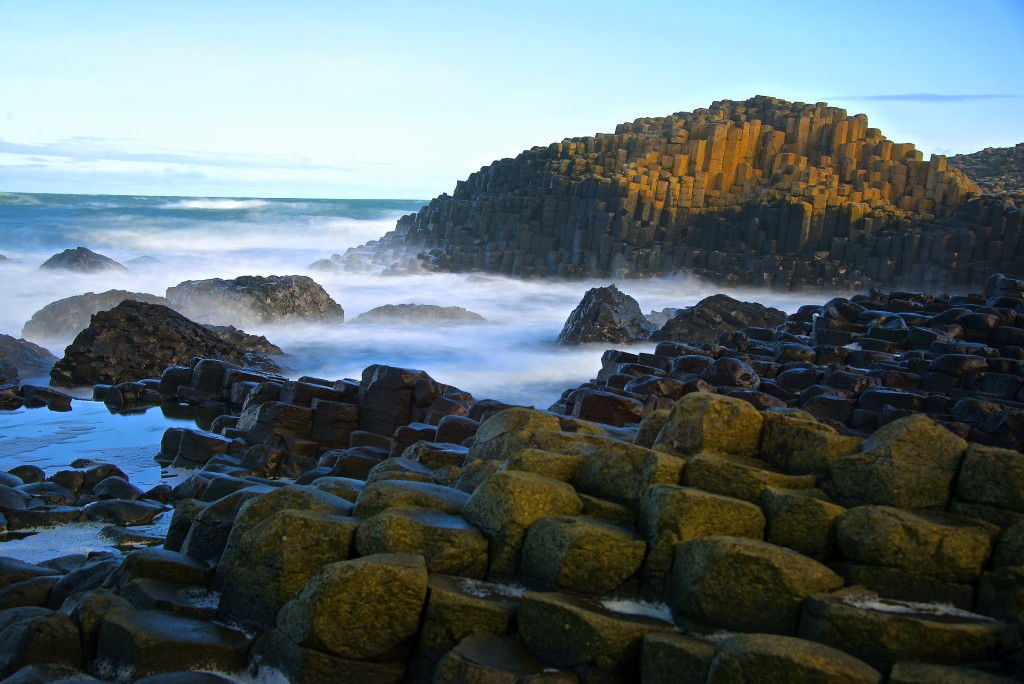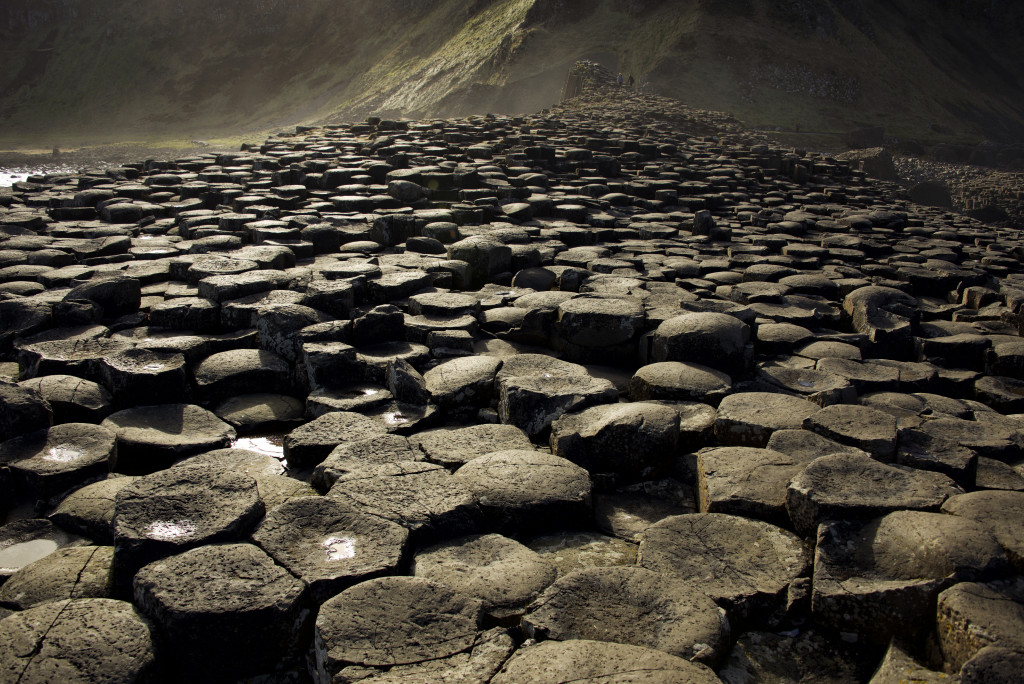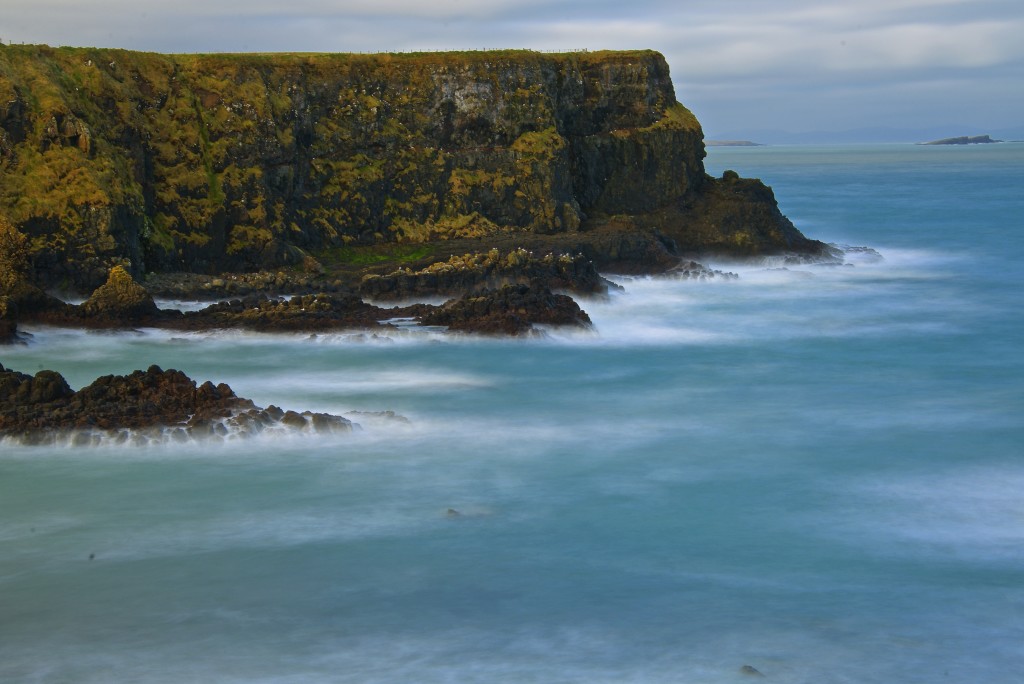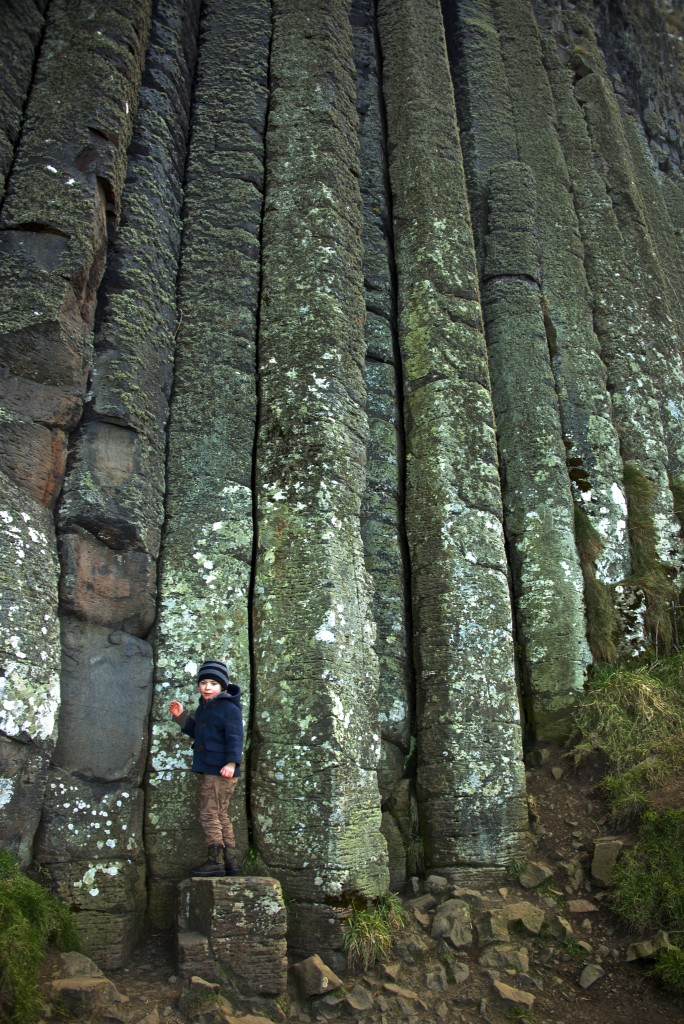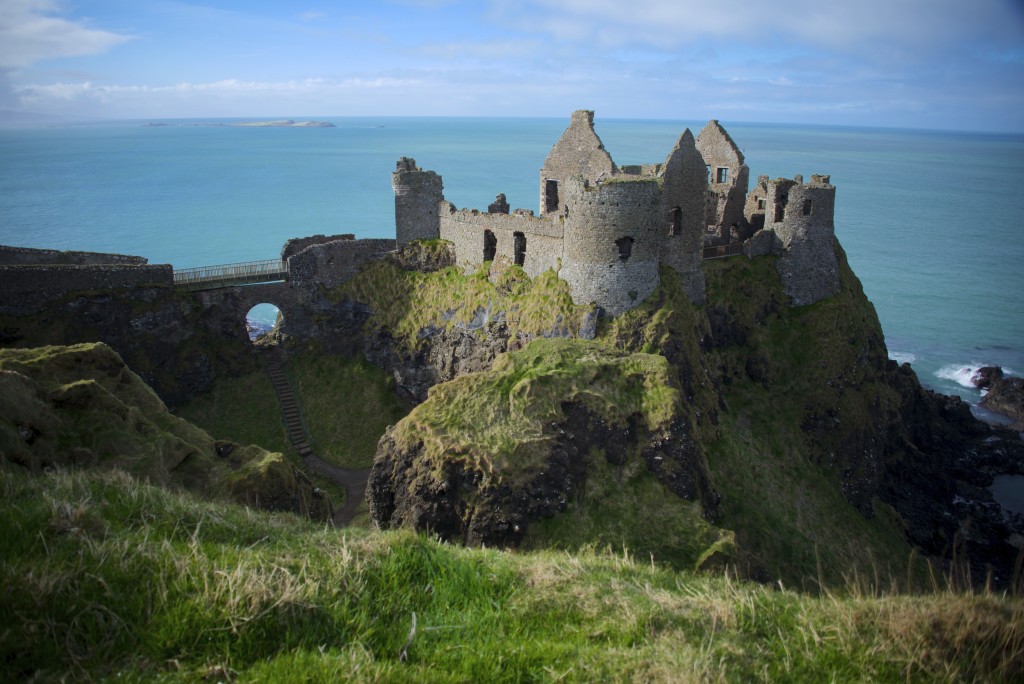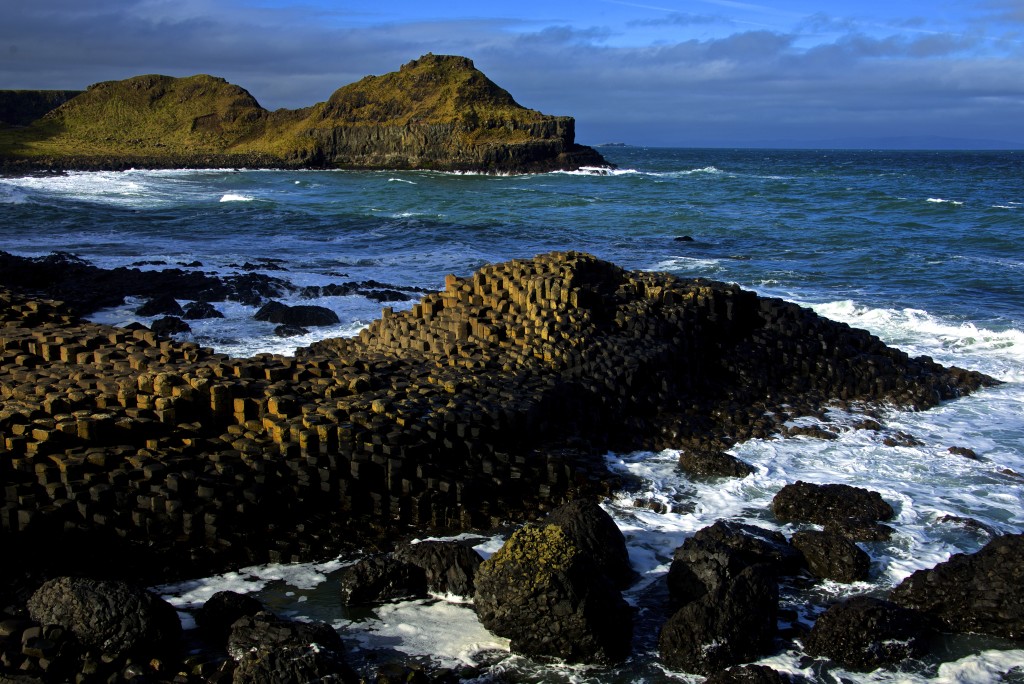In an act to establish dominance among the island giants, Benandonner challenged Fionn mac Cumhaill to battle. So determined was Benandonner to beat Fionn he built a massive stone causeway from Staffa to Ulster. Fionn knew that Benandonner was mightier than he so he conspired with his wife Oonagh to trick Benandonner. Oonagh dressed Fionn as a babe and lay him in a cradle. Once Benandonner finished constructing his massive stone causeway, he approached Fionn’s house only to find Oonagh rocking the massive babe in the cradle. At first Benandonner thought it an easy challenge to defeat a swaddling babe even one as large as Fionn, until Oonagh told Benandonner that Fionn’s father would soon be returning from hunting. The challenger surmised that the father of this massive babe must be much larger than himself and thought better of his challenge. He raced back across his causeway, destroying it along the way. We can see the remains of the causeway now at Fingal’s Cave on the Isle of Staffa and along the northern coast of Ulster. It is especially well preserved at what is now called the Giant’s Causeway.
Another tale regarding the origin of the Giant’s Causeway begins ~60 million years ago when the continents of Laurentia and Afro-Eurasia began tearing away from one another and the newly forming Atlantic Ocean was merely a long, thin puddle. The thinned continental crust gave way intense volcanic activity along the entire margins of the newly opening ocean. The features seen along the northern coast of Antrim County in Northern Ireland were formed as thick basaltic lava flows cooled and contracted forming the columnar basaltic columns we see today.
Giant’s Causeway was first described before a scientific audience by a man who had never actually seen the locality. It was Sir Richard Bulkeley in 1693 who described the Causeway as being made of vertical solid ‘cylinders’ without any joints. This was followed by Rev. Sam Foley in 1694 who corrected Sir Bulkeley’s fallacious account. “We found none square, but almost all pentagonal, or hexagonal; only a few had seven sides; and many more pentagons than hexagons; but they are all irregular… They always lie as close as possible for one stone to lie on another, so that on the outside of the pillars you can only discern the crack that joins the two stones.” Further conjecture was made once again by one who had never visited the Causeway, when Dr. Thomas Molyneux identified the rock columns as being Lapis Basaltes vel Basanos maximus Hibernicus (basaltic rock of the Irish Giants).
Drawing upon similarity of the Giant’s Causeway with some basaltic columns in Auvergne, France, Nicolas Desmarest posited that these rocks were volcanic in origin. The idea that these columnar features were formed through volcanic processes ignited a controversy in the natural sciences that would last for several decades. Although there were supporters of Desmarest’s ideas of a volcanic origin, there were others who supported a marine origin. And thus the Plutonist and Neptunists made their stands. The Neptunists followed the ideas of Abraham Gottlob Werner who proposed that all the rocks seen on the Earth’s surface were formed as a great ocean gradually receded. The Plutonists on the other hand followed the doctrine of James Hutton who proposed the Earth was in constant flux and rejuvenation. Hutton argued this process of rejuvenation ‘no vestige of a beginning and no prospect of an end’.
The ironic thing about all of this bickering between the Plutonist and Neptunists was that none of them had actually visited the Antrim coast. It was not until 1784 when a geologist finally made a detailed survey of the geology in the environs of the Giant’s Causeway. The Reverend William Hamilton wrote a series of letters to the Earl of Charlemont describing his observations. The book of compiled letters stood as the benchmark for the geology of the Antrim coast for nearly 100 years.
The current understanding of the Giant’s Causeway is in many ways similar the geological setting of the East African Rift. As the Somali plate is rifting away from the rest of Africa, massive amounts of basalt issue forth from great fissures in the crust. In the furthest northern portion of the rift, the ocean is beginning its slow and steady transgression eventually to flood the rift floor. In the next 10 million years or so we will have a new sea, similar to the Red Sea; in the next 20 million years, a new ocean.
And so the Giant’s Causeway went from the legend of Benandonner to the myth of the Deluge and finally to the hypothesis of uniformitarianism. As far as geologic pilgrimages go, the Giant’s Causeway is definitely high on the list.
![]() This work is licensed under a Creative Commons Attribution-NonCommercial-ShareAlike 4.0 International License.
This work is licensed under a Creative Commons Attribution-NonCommercial-ShareAlike 4.0 International License.

